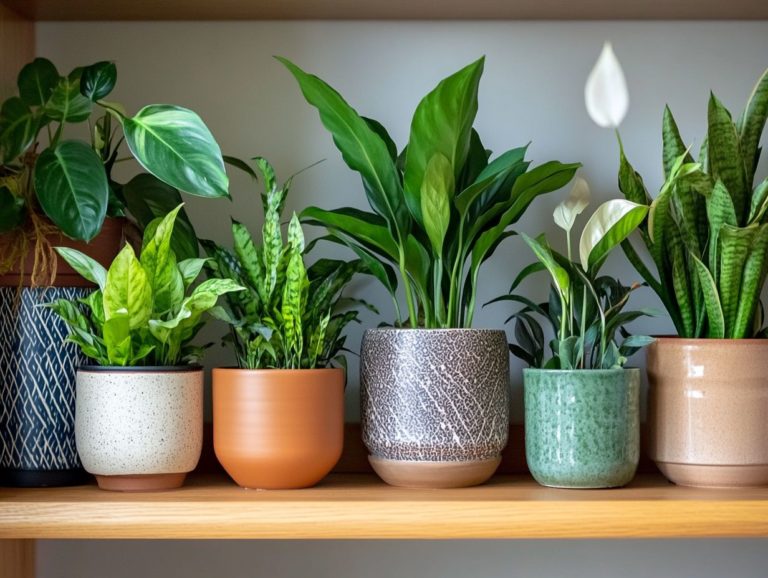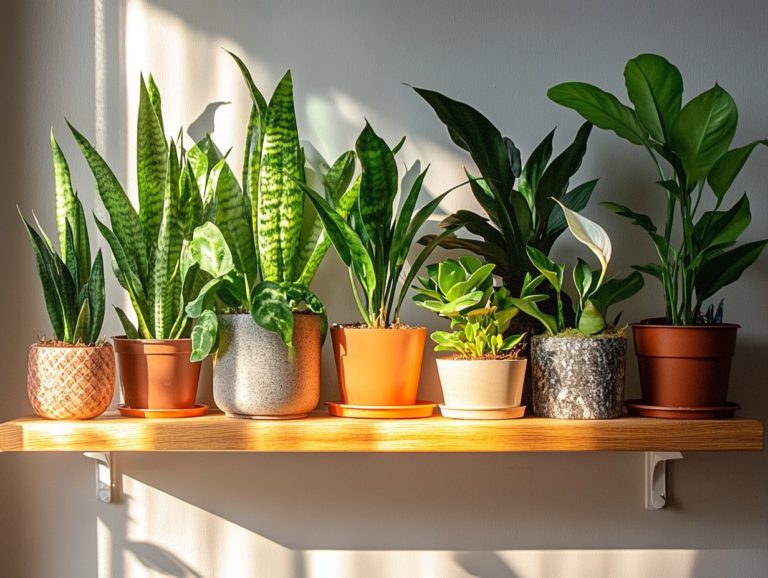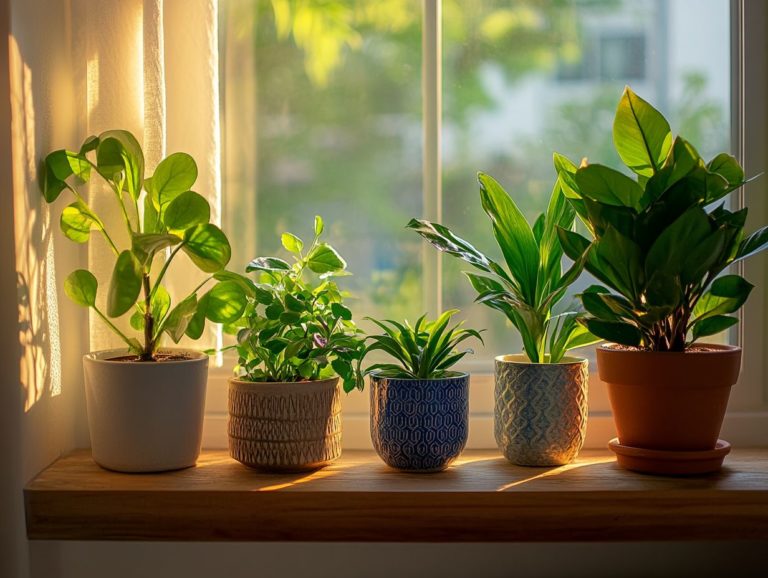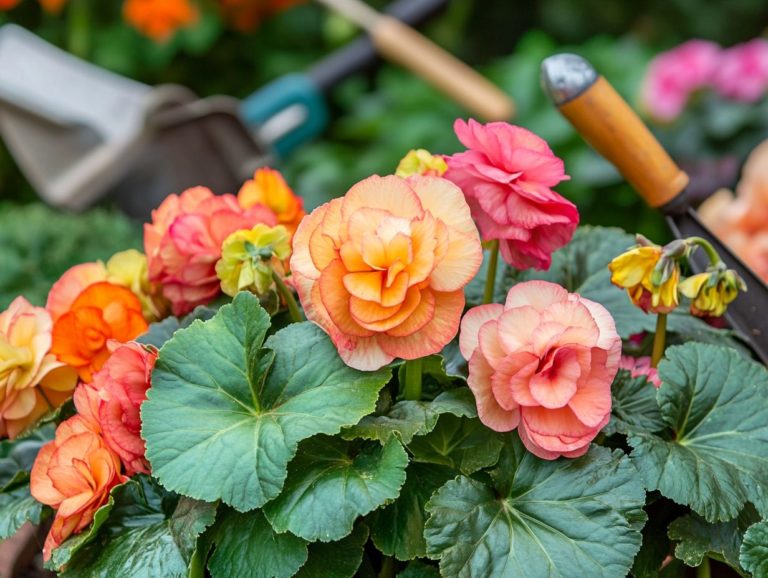Caring for Crotons: Tips for Vibrant Color
Crotons are truly a sight to behold, celebrated for their vibrant foliage and striking colors. However, maintaining their health and vibrancy demands a bit of expertise in their care.
This guide will arm you with the essentials of croton care, detailing their light and water requirements, soil and fertilizer preferences, as well as how to identify and address common pests and diseases.
You’ll also discover valuable tips on pruning and propagating these stunning plants to enhance their vivid hues.
Prepare to unlock the full potential of your crotons!
Contents
Key Takeaways:
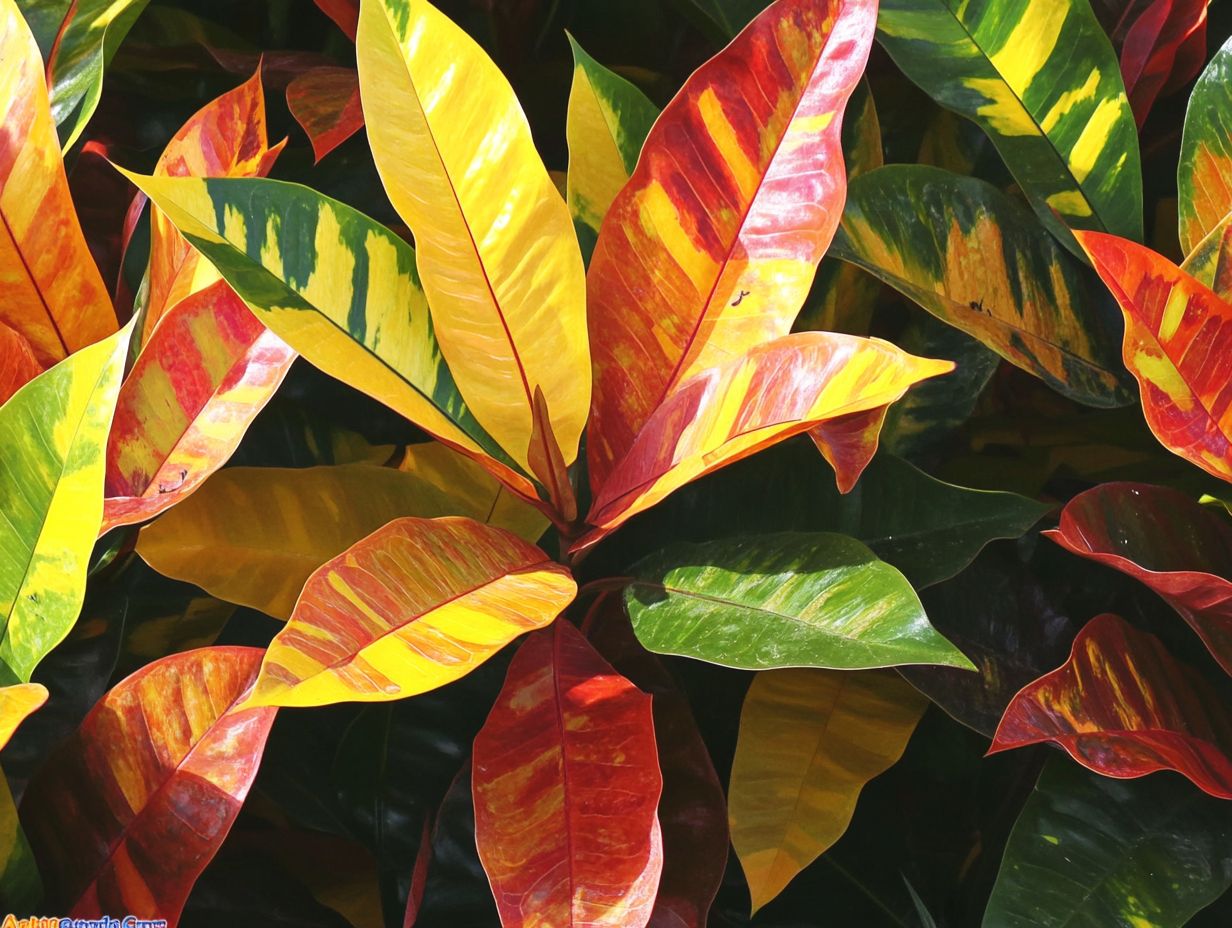
- Provide bright, indirect light and consistent watering to keep your crotons healthy and vibrant.
- Use well-draining soil and fertilize regularly to ensure proper nutrition for your crotons.
- To maintain and enhance the colorful foliage of your crotons, regularly prune using effective pruning techniques and propagate them.
What are Crotons?
The croton plant, scientifically known as Codiaeum variegatum, is a tropical gem hailing from Southeast Asia, celebrated for its striking colors and distinctive leaf patterns. Often referred to as Joseph s Coat, this popular ornamental plant boasts a fascinating history, having captured the attention of prominent figures such as Franklin and Eleanor Roosevelt, who famously tended to these exquisite specimens in their gardens.
With a plethora of cultivars at your disposal, crotons effortlessly enhance any indoor or outdoor space. They infuse it with vibrant hues and lush appeal.
Croton Care Basics
Caring for crotons requires a keen understanding of their unique needs as tropical plants. This includes knowledge about soil requirements, temperature range, and humidity levels.
You ll want to pay attention to appropriate watering techniques, humidity levels, and the ideal temperature ranges for them to truly thrive.
These vibrant beauties prefer well-drained soil to avoid the dreaded root rot. They flourish best in hardiness zones 9 to 11, which refers to specific climate areas that are suitable for growing certain plants. This makes them an excellent choice for both indoor plants and outdoor crotons who appreciate a touch of color in their green spaces.
Light and Water Requirements
Give your crotons the bright, indirect sunlight they crave to watch them thrive! They can handle a bit of direct light, which only enhances their vibrant hues.
For watering, let the soil dry out slightly between sessions to avoid overwatering. Understanding the delicate balance of light and water is essential for keeping these stunning plants healthy.
Ideally, position your crotons near a window that offers filtered sunlight; this will maximize their color vibrancy without putting them under stress. Keep a close eye on them for any signs of distress, such as fading leaves from too much direct sun or leggy growth from not enough light. Additionally, if you’re interested in caring for other plants, consider the tips on caring for indoor bougainvillea. Act quickly if you notice any signs of distress to keep your crotons vibrant!
For watering, stick with room temperature water to ensure the roots remain comfortable and happy this is one of the key watering tips for croton plant care. Using a well-draining potting mix will also help maintain optimal moisture levels, allowing your crotons to thrive beautifully in any indoor environment.
Soil and Fertilizer Needs
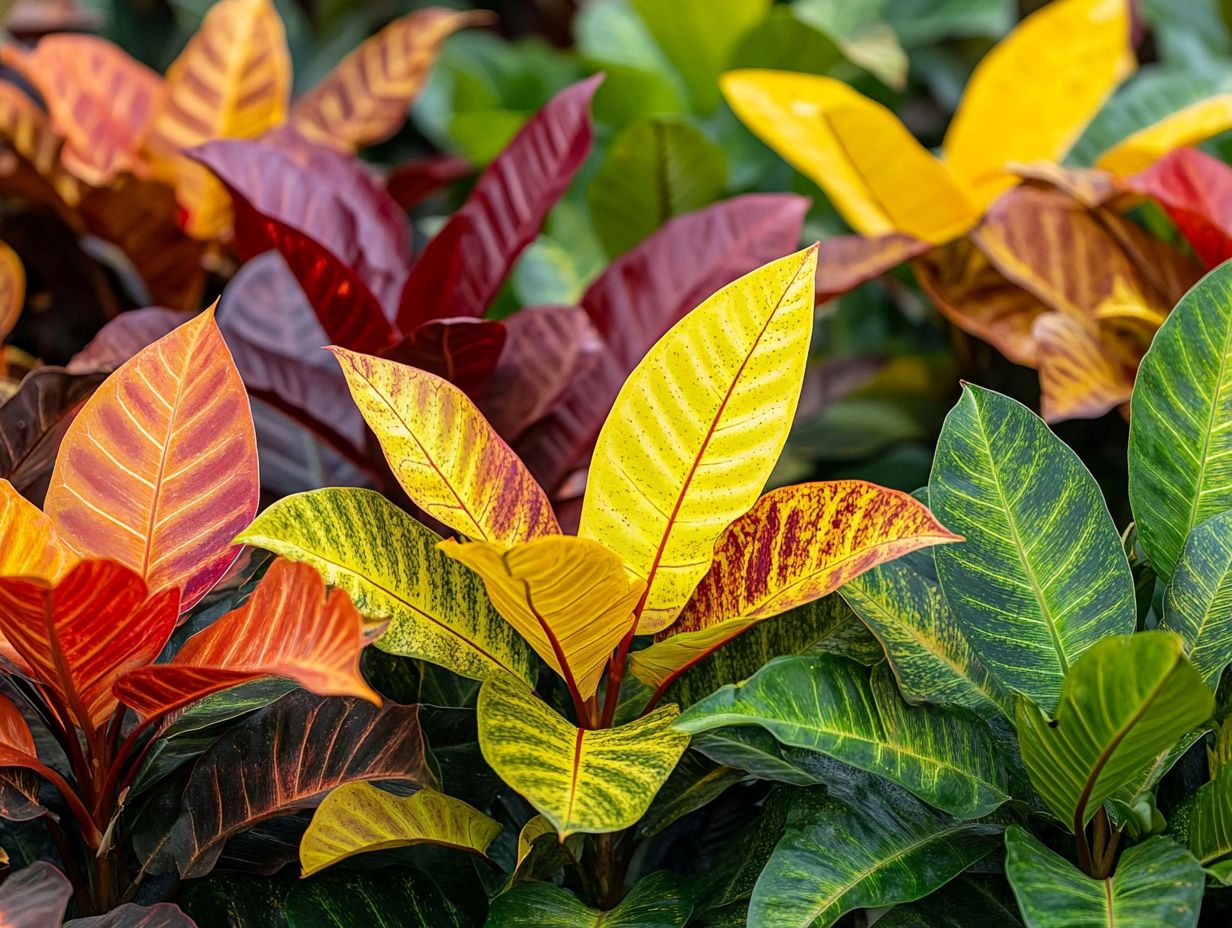
For optimal growth, provide crotons with well-drained soil that retains just enough moisture while allowing excess water to escape. This helps prevent root rot.
Using effective fertilizing methods, like a balanced fertilizer during the growing season, ensures your plants receive essential nutrients, promoting vibrant colors.
The ideal soil mix for crotons consists of potting soil, perlite (a lightweight material that helps with drainage), and peat moss. This mix creates a light, airy environment that supports healthy root development.
A fertilizer rich in nitrogen, phosphorus, and potassium is crucial, as these elements contribute to vibrant leaf coloration and robust growth.
Keep an eye on your soil pH; it should be between 6.0 and 6.5 for your crotons to thrive. This enhances nutrient absorption, helping your plants flourish whether indoors or outdoors.
Remember, a well-rounded care regimen includes not only the right soil and fertilization but also diligent watering and plenty of light.
Common Croton Pests and Diseases
Crotons are prone to common pests like spider mites, mealybugs, and thrips. These pests can jeopardize your plants’ well-being if not addressed quickly.
Diseases like crown gall and anthracnose can also threaten these vibrant plants. With the right treatment like neem oil and horticultural soap you can effectively manage these challenges and keep your crotons thriving.
Identifying and Treating Issues
Identifying and addressing issues in your crotons starts with recognizing symptoms of common pests and diseases. These symptoms often appear as leaf discoloration or wilting, including signs of leaf drop.
You can combat these pests using treatments like neem oil or horticultural soap to keep your plants healthy and vibrant.
To accurately diagnose any issues, closely examine the leaves and stems for signs of infestations like spider mites or aphids. These pests often leave behind a sticky residue or webbing. If you notice spots or powdery mildew, those could indicate fungal infections, while yellowing leaves may suggest nutrient deficiencies.
Integrated pest management (a method that uses both natural and chemical ways to control pests) is essential. In addition to applying organic treatments, introducing beneficial insects like ladybugs can help control pests naturally.
Ensuring proper watering practices and providing adequate sunlight will further strengthen your plants’ immune systems, making crotons less susceptible to infestations and diseases.
Pruning and Propagation
Pruning and propagating crotons are vital for fostering robust growth and preserving their shape. Use smart pruning techniques to make your crotons flourish!
Master propagation techniques, like stem cuttings, to expand your collection while ensuring each new plant thrives.
Check your pots regularly and repot your crotons as they outgrow their containers. This gives them the space they need to thrive!
How to Maintain and Multiply Your Crotons
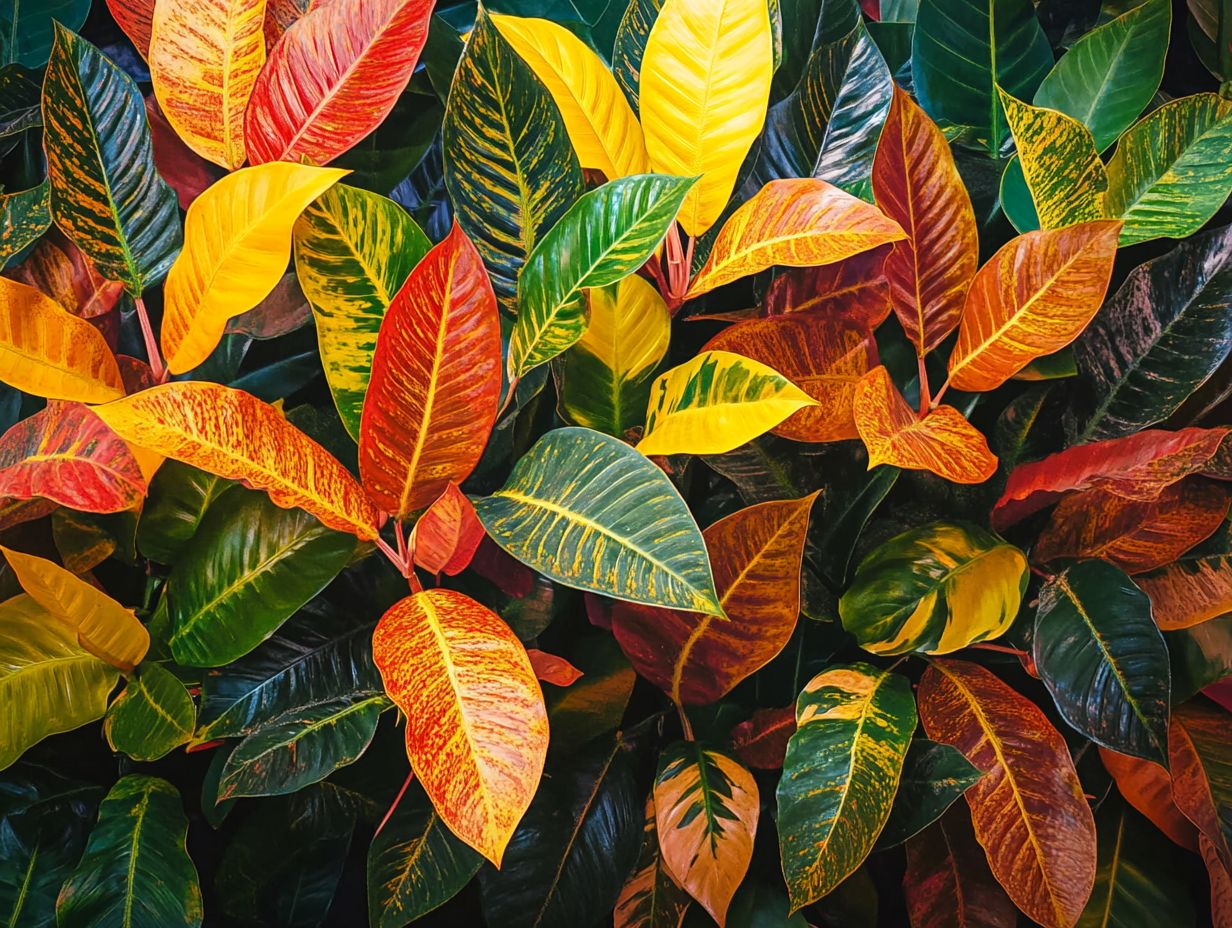
To maintain and multiply your crotons, learn how to prune. This helps the plant grow better and allows you to propagate through stem cuttings.
Regularly trim dead or yellowing leaves. This promotes healthier foliage and helps light reach deeper into the plant, enhancing its vibrant colors.
For propagation, take cuttings from healthy plants during the growing season. Place these in water or well-draining soil to develop roots. Keep them warm and humid for the best results.
Tips for Vibrant Color
Providing the right conditions is key for vibrant colors in your crotons. Ensure they get enough sunlight and practice balanced watering.
Place them in well-lit areas to enhance their striking hues. This creates an impressive display that captivates everyone.
Enhancing and Preserving Color in Crotons
To enhance the colors in your crotons, ensure they get ample sunlight and optimal humidity. Both are essential for vibrant leaf pigmentation.
Give them at least six hours of bright, indirect sunlight daily. Insufficient light can dull their stunning appearance.
Maintain humidity levels around 50-60%. Mist them regularly, use a humidifier, or place them in a suitable environment. Well-draining soil with organic matter also supports strong root growth.
Frequently Asked Questions
What are crotons and how do they add vibrant color to my home?

Crotons are tropical plants with colorful leaves in shades of red, orange, yellow, and green. They add a pop of color to your indoor or outdoor space.
What are some tips for caring for crotons?
Crotons thrive in bright, indirect light and need consistent watering. Fertilize every few months and prune occasionally to maintain their shape.
How often should I water my crotons?
Water crotons about once a week or when the top inch of soil is dry. Avoid overwatering to prevent root rot.
Can I grow outdoor crotons outdoors?
Yes, crotons thrive outdoors in warm, humid climates. They prefer partial shade and protection from strong winds and cold.
What are signs of an unhealthy croton plant?
Look for drooping leaves, yellowing or browning foliage, and stunted growth. These can indicate issues with watering, sunlight, or pests.
How can I prevent my crotons from experiencing leaf drop?
Crotons drop leaves when they don’t get enough water. Make sure to water them consistently.
Cold drafts or sudden temperature changes can also cause leaf drop. Keep your crotons in a stable environment to prevent this!
Keep your crotons happy and vibrant with the right care! Don t let them suffer act now to keep them thriving.

